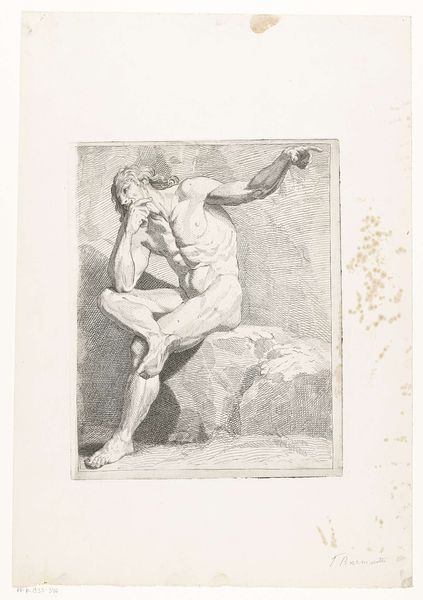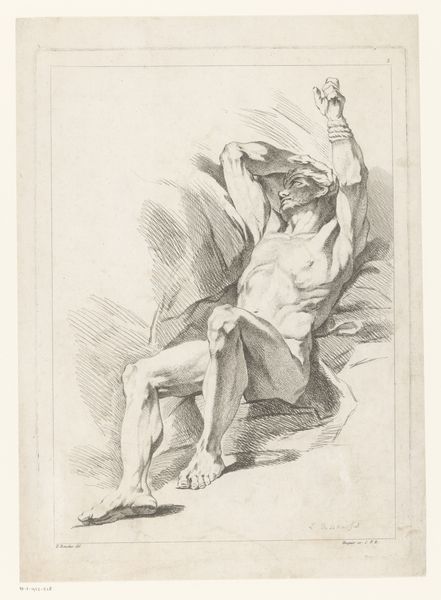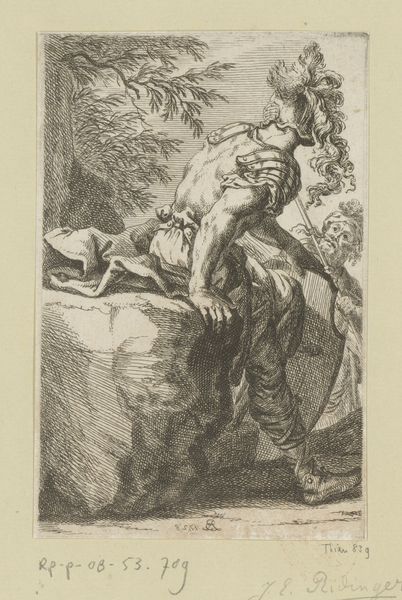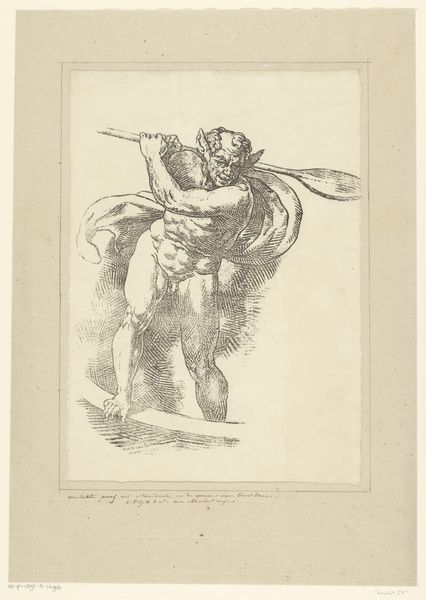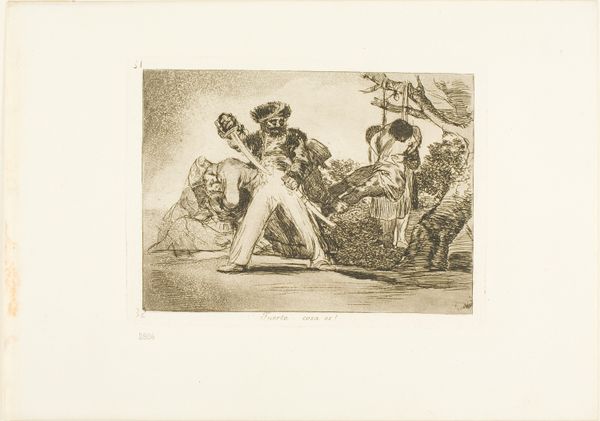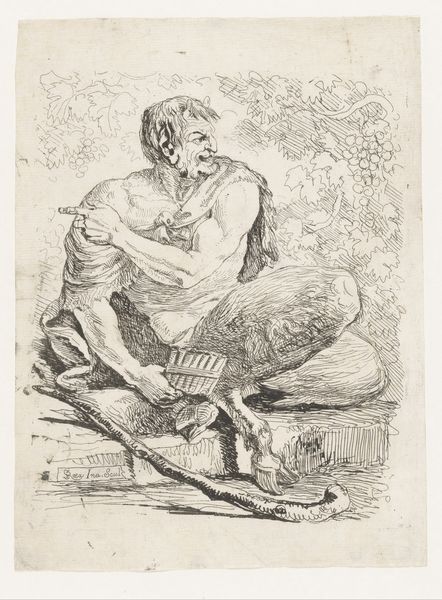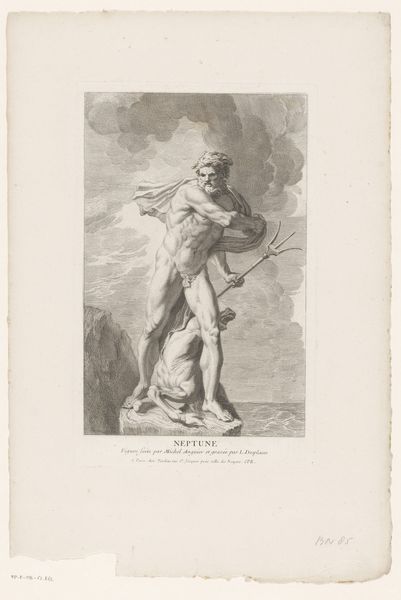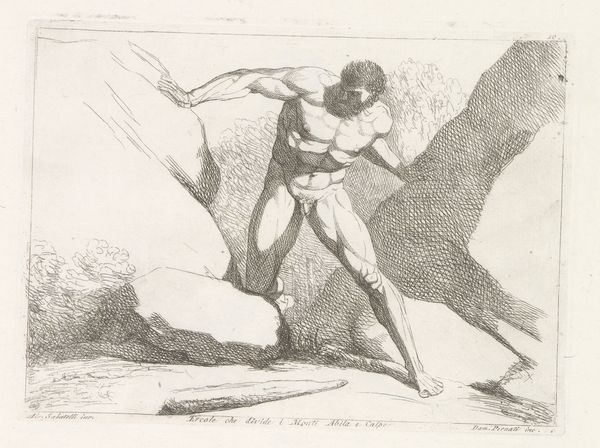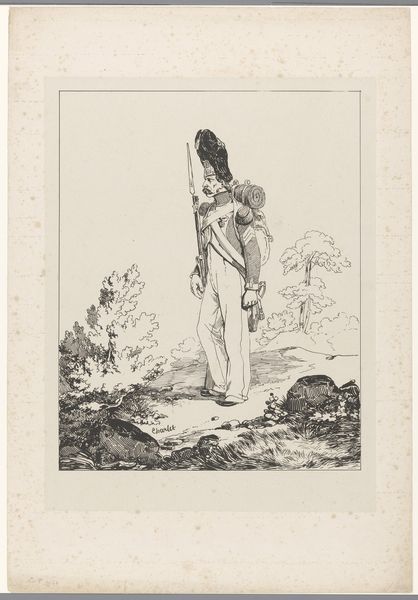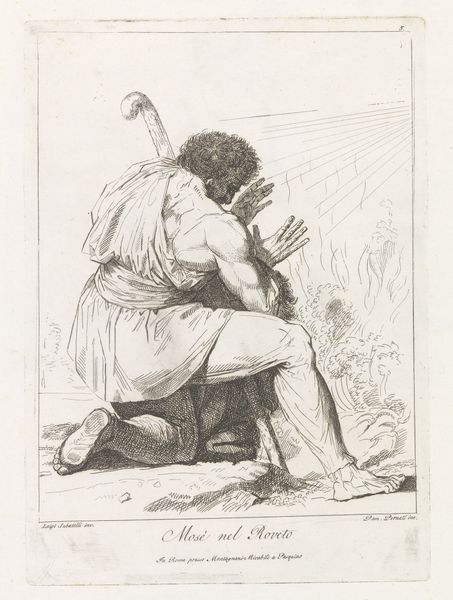
drawing, ink, pencil
#
drawing
#
neoclacissism
#
ink drawing
#
pen sketch
#
pencil sketch
#
figuration
#
ink
#
pencil
#
history-painting
#
academic-art
Dimensions: height 165 mm, width 146 mm
Copyright: Rijks Museum: Open Domain
This print, Milo van Croton, was made by Damiano Pernati in the late 18th or early 19th century, using a technique called etching. This process involves coating a metal plate with wax, scratching an image into the wax, and then immersing the plate in acid. The acid eats away at the exposed metal, creating lines that hold ink. The linear quality of etching lends itself to the depiction of mass, as can be seen in the subject's powerful musculature. Note how Pernati uses the etched line to carefully define the strongman’s body as he strains against the tree. The process requires a high degree of skill and control, demanding careful labor to transfer the image onto the plate, a process of exacting hand-work which stands in contrast to the industrialized, repeatable process of printing itself. Paying attention to both materials and making allows us to see how artistry and labor come together in Milo van Croton, and how the print as an object is imbued with its own cultural and social significance.
Comments
No comments
Be the first to comment and join the conversation on the ultimate creative platform.

